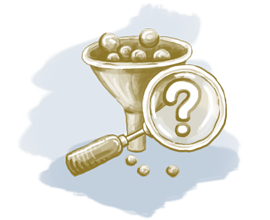In recent articles, we’ve been discussing the vital necessity of aligning Sales and Marketing.
When each is working in its own sphere and more or less contesting one another, a company is factually crippled. This is especially true in today’s lightning-fast and fiercely competitive business environment; a company needs to operate as a unified team to survive let alone succeed.
Both Sales and Marketing engage in pipeline management, each from their own different places in the sales process. Marketing is first up, engendering interest in the company’s products in the form of leads. Sales then move those leads forward, qualifying and managing them as opportunities, ultimately into closed sales.
For each of their individual—as well as cooperative—functions, both Sales and Marketing have a keen interest in the understanding of buyer behavior.
 What Does Buyer Behavior Mean?
What Does Buyer Behavior Mean?
In B2B sales, understanding buyer behavior means:
- Have a clear grasp on typical attitudes, problems and issues of the primary decision-makers in a typical target company.
- Having a full understanding of the underlying issues that would cause companies to purchase your product or service.
- Mapping out the process through which a purchase decision travels within a typical target company.
Both Sales and Marketing must have this understanding, and must also agree on it, to move forward with cohesive and progressive pipeline management.
The best source of information to help your sales pipeline management and to fully understand buyer behavior would be direct contact with decision-makers inside potential prospect companies. You want to learn all about them, the general issues they are confronted with and what situations exist within the company that your product would solve. You want to know what would move decision-makers along the sales cycle, and what would cause them to forward the potential purchase up the line to the next decision-maker.
While contact with prospects is considered the territory of Sales, some direct contact from Marketing to potential prospects would greatly strengthen their understanding of buyer behavior. Minimally Marketing should interview existing clients, consulting the clients’ perspective as it existed prior to purchase. Additional research can also be conducted through online forums and industry publications. As well, a marketing survey of your own company’s successful salespeople can provide some good insight into buyer behavior.
Use of Knowledge
Once Sales and Marketing have gathered and compiled as much data as possible on buyer behavior, that knowledge must be used in sales pipeline management. Sales and Marketing will utilize the information in different but similar ways.
Marketing will be able to craft campaigns and messaging designed to reach key decision-makers within a company. Normally there is one or two prime personnel within a company that you want to reach; having fully researched buyer behavior, you will then know who they are and can reach out to them through promotional efforts.
The understanding of buyer patterns also allows Marketing to back up sales with individual marketing communications targeted at various decision makers during the course of the sales cycle.
For Sales, knowledge of buyer patterns helps prepare a salesperson for any communication with specific decision makers. Various approaches of sales reps can be conceived in advance, also utilizing knowledge of experienced reps in dealing with such decision makers. Combining sales rep experience with knowledge of buyer behavior, best practices can be evolved and shared—and also updated as better practices are discovered.
Informing Sales Process and CRM Solution
Buyer behavior also has another important function: to inform your sales process and CRM solution. Together these form the backbone of pipeline management itself.
A sales process is that series of steps a sale travels through from lead to close. The best possible way for a sales process to function is to have it mirror the buying process of the typical target company. Not only will the actions were taken by the salesperson be logical to the prospect, but the salesperson will also have a good measure of prediction knowing “what should come next” and being prepared for it.
Likewise your CRM solution should be implemented to follow your sales process. This is the only way CRM is truly useful, intuitive and actually empowering of sales reps.
Sales and Marketing should be fully aligned in their pipeline management activities. A key to this alignment—and the success of both—is the full understanding of buyer behavior.
How can you implement your CRM solution to follow your sales process? Find out! Sign up for one of our free webinars.











